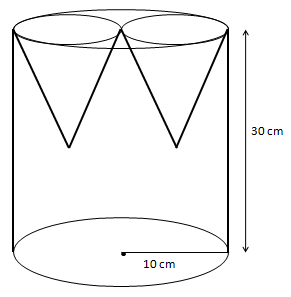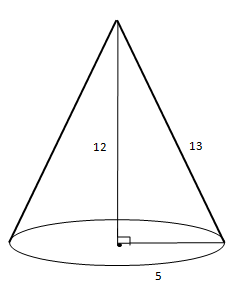Question
The height of a solid cylinder is 30 cm and the diameter
of its base is 10 cm. Two identical conical holes each of radius 5 cm and height 12 cm are drilled out. What is the surface area (in cm²) of the remaining solid?Solution
According to question: Height of cylinder = 30 cm Radius of cylinder = 5 cm Height of cone = 12 cm Radius of cone = 5 cm We know that, l2 = h2 + r2 ⇒ l2 = 122 + 52 ⇒ l2 = 144 + 25 ⇒ l = 13 cm The surface area of the remaining figure = surface area of cylinder + 2 × surface area of the cone ⇒ 2πrh + 2πrl ⇒ 2πr(h + l) ⇒ 2π × 5(30 + 13) ⇒ 430π ∴ The surface area of the remaining solid is 430π. 

National Bank for Agriculture and Rural Development (NABARD) is promoting FPOs under its dedicated funds viz. _______________ towards collectivization o...
Which statement is not true about aquaporins?
What is the MSP of Wheat for the Rabi Marketing Season 2026-27?
Which fund supports the establishment of Agri-Business Incubation Centers (ABICs)?
Net return per hectare is:
I. Overall efficiency measure
II. Partial efficiency measure
III. Specific efficiency measure
Under Component B of PM KUSUM, what is the Central Financial Assistance for standalone solar pumps in general states?
What percentage of financial assistance is provided to Women Self-Help Groups (SHGs) for purchasing drones under the Central Sector Scheme?
According to the latest estimates for 2025-26, which state is the largest producer of rice in India?
In which technology the life of a tomato is enhanced.
Light-stable synthetic pyrethroids, which is registered to control mites
Relevant for Exams:



